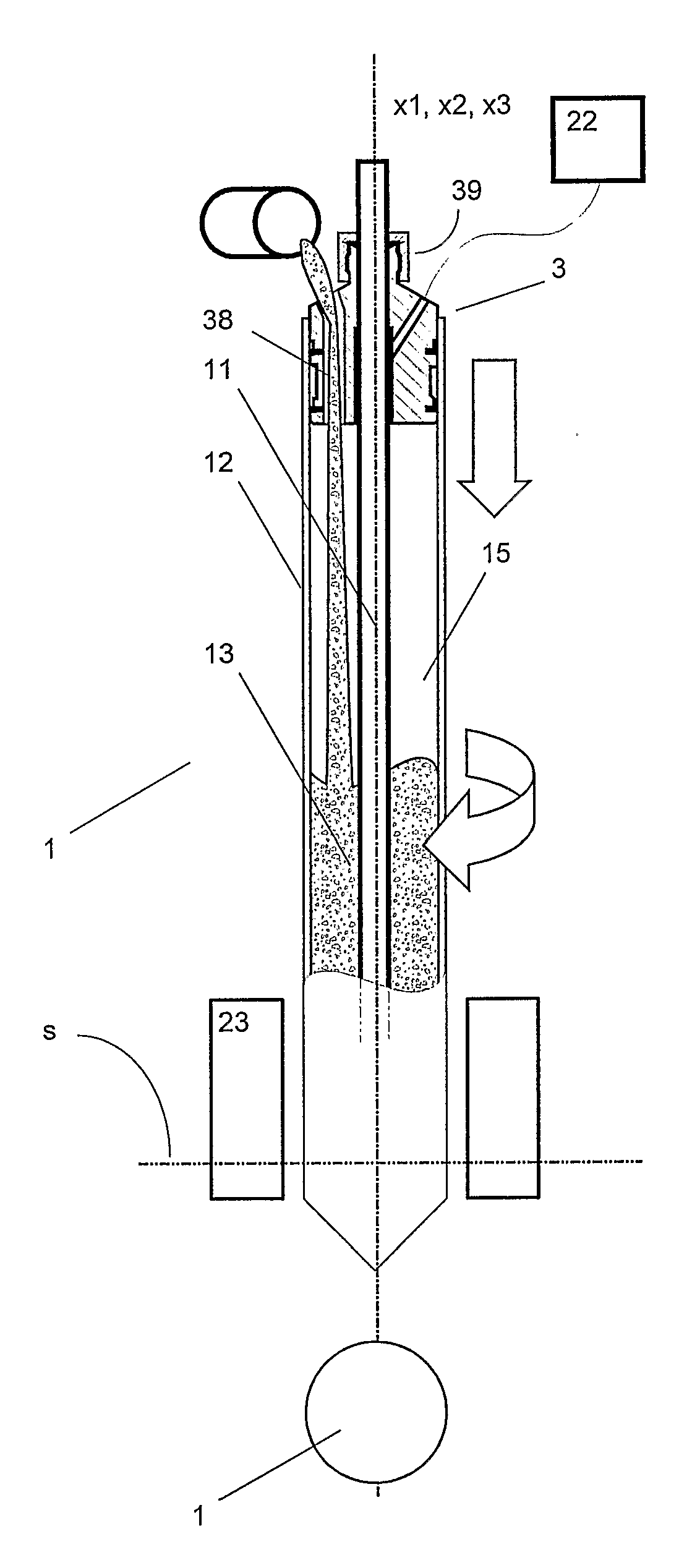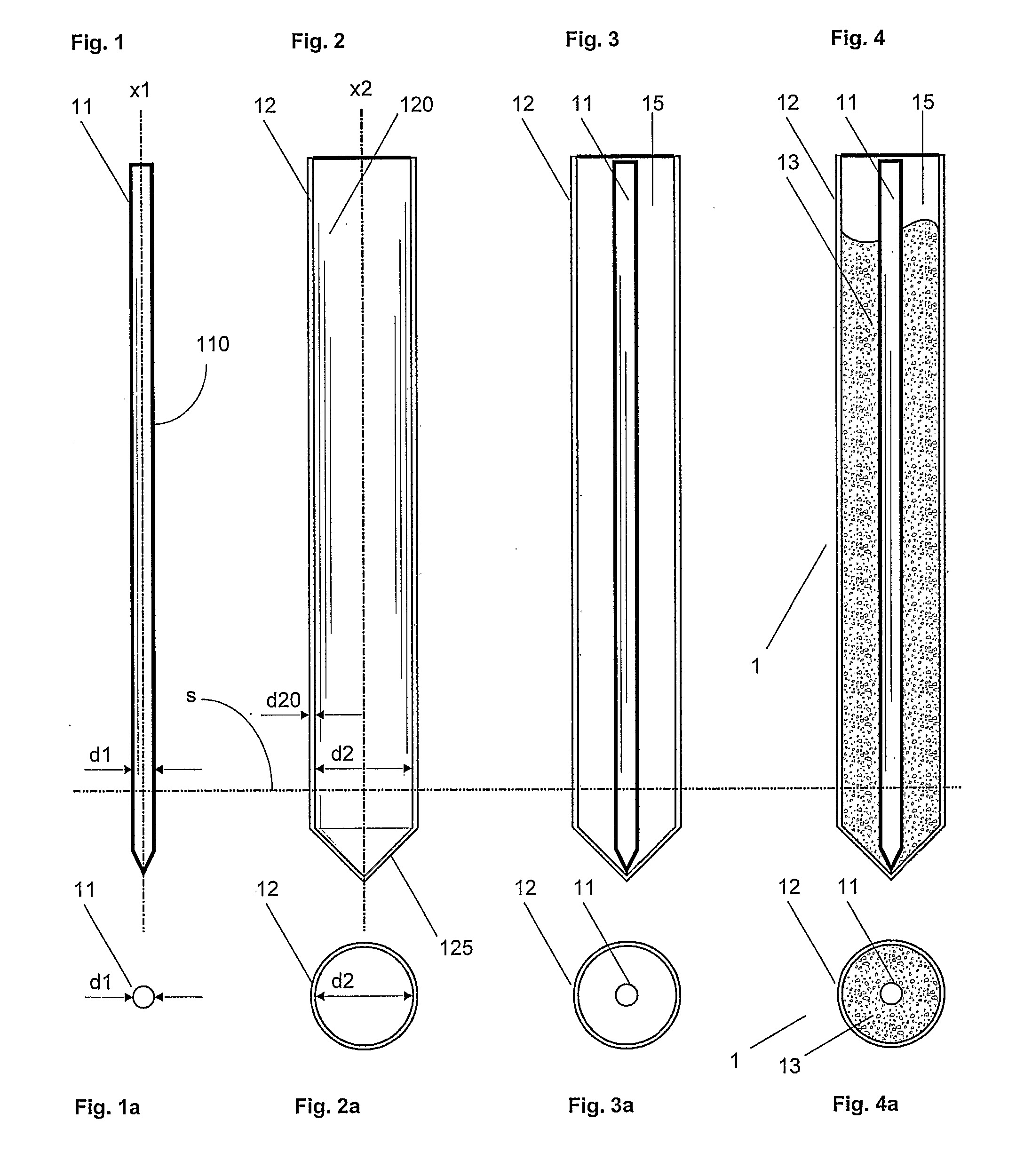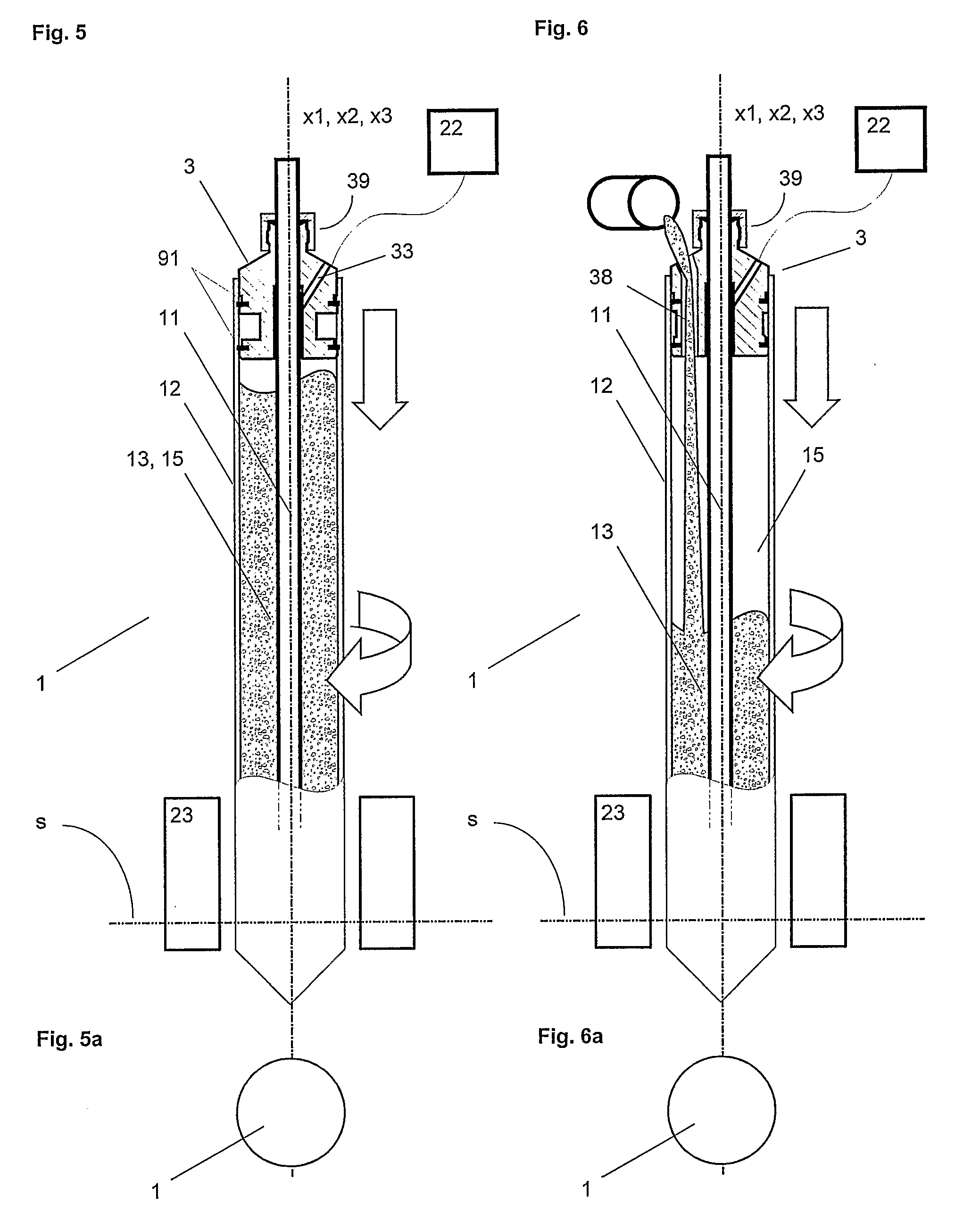Method for Fabricating an Optical Fiber, Preform for Fabricating an Optical Fiber, Optical Fiber and Apparatus
a technology of preform and optical fiber, which is applied in the direction of manufacturing tools, mechanical equipment, instruments, etc., can solve the problems of continuous concern for the cost of high-quality optical fiber from rod-and-tube preform production, negative effect on productivity, and inability to make preforms of more than 25 mm in diameter, etc., to achieve high flexibility, reduce breakage risks, and increase the effect of drawing for
- Summary
- Abstract
- Description
- Claims
- Application Information
AI Technical Summary
Benefits of technology
Problems solved by technology
Method used
Image
Examples
Embodiment Construction
[0049]FIG. 1 shows a primary preform 11 having a first primary axis x1, an outer diameter d1 and an outer surface 111. Manufacturing of such a preform has been described above.
[0050]FIG. 2 shows a thin walled silica tube 12, having a first primary axis x2, an inner diameter d2, an outer diameter d20 and an inner surface 120. The thin walled silica tube 12, which comprises a conical closure 125 at its lower end, is used according to the inventive method as overcladding tube 12. Silica tubes of this kind are available from several manufacturers.
[0051]FIG. 3 shows the primary preform 11 held in a centrally inserted position within the overcladding tube 12 with said first and second primary axes x1, x2 in substantial alignment with each other.
[0052] The diameter d20 of the circular wall of the overcladding tube 12 is for example ten times smaller than its inner diameter d2. However the ratio of said diameters d2 / d20 may be up to 50 and higher. The ratio d2 / d1 of the inner diameter d2...
PUM
| Property | Measurement | Unit |
|---|---|---|
| temperature | aaaaa | aaaaa |
| temperature | aaaaa | aaaaa |
| temperature | aaaaa | aaaaa |
Abstract
Description
Claims
Application Information
 Login to View More
Login to View More - R&D
- Intellectual Property
- Life Sciences
- Materials
- Tech Scout
- Unparalleled Data Quality
- Higher Quality Content
- 60% Fewer Hallucinations
Browse by: Latest US Patents, China's latest patents, Technical Efficacy Thesaurus, Application Domain, Technology Topic, Popular Technical Reports.
© 2025 PatSnap. All rights reserved.Legal|Privacy policy|Modern Slavery Act Transparency Statement|Sitemap|About US| Contact US: help@patsnap.com



